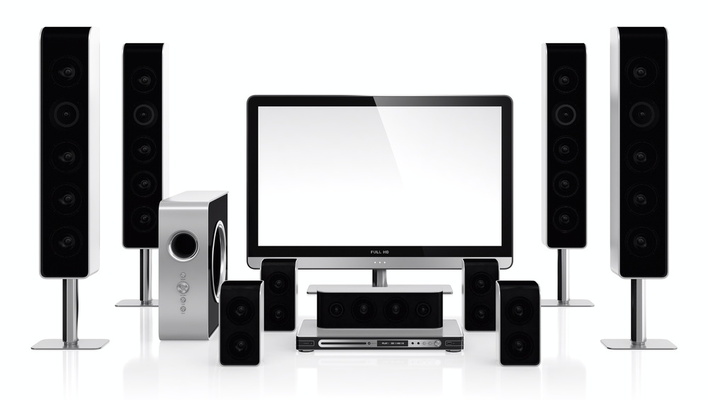A standard home theater setup utilizes several speakers to achieve optimal surround sound. Different setups offer varying speaker configurations, among them being the 5.1 and 7.1 setups. When setting up these home theater setups, you may have come across the terms surround and back surround speakers. While the terms can be confusing, it is important to understand what each speaker does in the home theater setup.
Ideally, side surround and surround back speakers are about the same size, and most are likely to be a small pair of bookshelf or satellite speakers. However, there is no law prohibiting one from using tower or floor standing speakers as surrounds.
Having said that, let’s get into the details of surround vs surround back and the impact each speaker has on your system setup. We’ll learn more about the differences between the two types of speakers as well as their applications.
Quick Comparison Table
| Surround speakers | Surround back speakers |
| Works with 5.1 configurations and above | Works with configurations above 7.1 |
| Reproduces surround sound effects | Augments the surround sound speakers |
| Placed beside the listening area | Goes behind the listening area |
| Used in comparatively small spaces | Needs more space |
| Requires a six channels receiver and above | Requires a receiver with a minimum of 8 channels(including the subwoofer) |

Surround Speakers
Surround speakers, also referred to as side surrounds speakers come in a pair and are often placed on both sides of the listening room. These speakers go beside the listening area, but you can also place them slightly behind your sitting area and angle them towards you.
The 5.1 configuration is by far the most common home theater configuration, and this is where surround speakers come in. The two right and left speakers are designed to cover the same frequency range as front speakers, but they mainly specialize in surround music and movie effects.
While the side surround speakers are similar to front speakers, investing in dedicated surround speakers will ensure accurate reproduction of surround sound effects for movies and music. However, it is important to note that movie dialogue and vocals are better handled by the front and center channel speakers.
For optimal performance, you’ll need to place the surround speakers as accurately as possible; otherwise, the sound reaching you will be distorted and delayed. You may also want to raise them at or slightly above ear level to ensure the sound is directly projected towards the listeners.
Surround Back Speakers
Back or rear surround speakers just as the name suggests, are placed at the back of the room. These speakers are used in home theater systems that feature a 7.1 configuration and above. The 7.1 configuration uses the same concept as a 5.1 setup, but the former provides an extra pair of rear surround speakers.
The two rear speakers have the same requirements as the side surround speakers, but the former provides a greater sense of space. For this setup, you’ll need a total of eight channels, so you may want to get an AV receiver that can accommodate the extra channels.
The main purpose of rear speakers is to complement your existing surround speakers. For this reason, most people tend to ignore or put less emphasis on back speakers, and in most cases, you can get away without them. However, adding a pair of rear speakers to your setup will add your overall cinematic experience.
Just like surround speakers, rear speakers need to be angled in such a way that sound is projected towards the listening area. It is also important to raise the rear speakers at ear level to ensure a seamless flow of sound towards the listening area.
Additionally, back surround speakers are used in relatively larger listening areas where 5.1 setups might struggle to perform optimally. The sitting area also need not be close to the rear wall to prevent the overlapping of sounds as they bounce off the walls. Ideally, the placement of the rear speakers has a big impact on the final sound output.
Although the work of rear speakers is to augment side surround channels, these speakers will provide greater sound dynamics. In addition, unlike in 5.1 setups, the incorporation of the rear pair takes the side surround channels off the burden of having to reproduce both front and rear sound.
Surround Back vs Surround-Our Take!
Technically speaking, there is no difference between surround and rear surround speakers. The only variation is the placement of speakers in the respective surround sound system. In a nutshell, surround speakers are used as a part of 5.1 speaker systems and above. On the other hand, rear surround speakers can only be incorporated in speakers systems with 7.1 channels and above.
The most critical part of the surround sound spectrum is covered by the side surround channels, making them more important than back speakers. The latter serves mainly as backup for front and surround speakers, but we cannot overlook the role they play in the final sound output.
Although most systems can do without the rear speakers, adding a pair will help balance the sound across the room for a more dynamic and richer sound performance. Ultimately, your choice between surround vs surround back will be informed by the size of your listening room, individual preferences, among other considerations.
